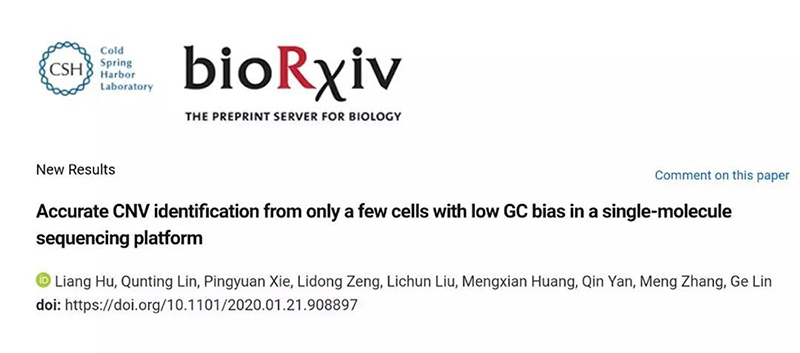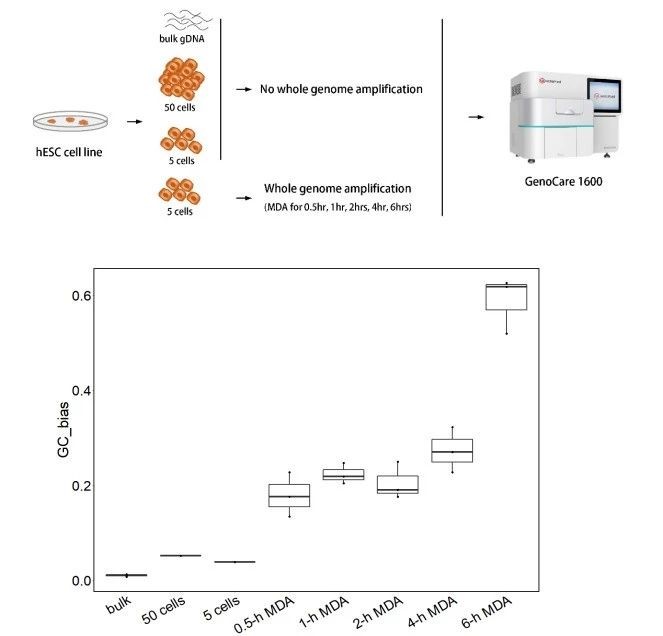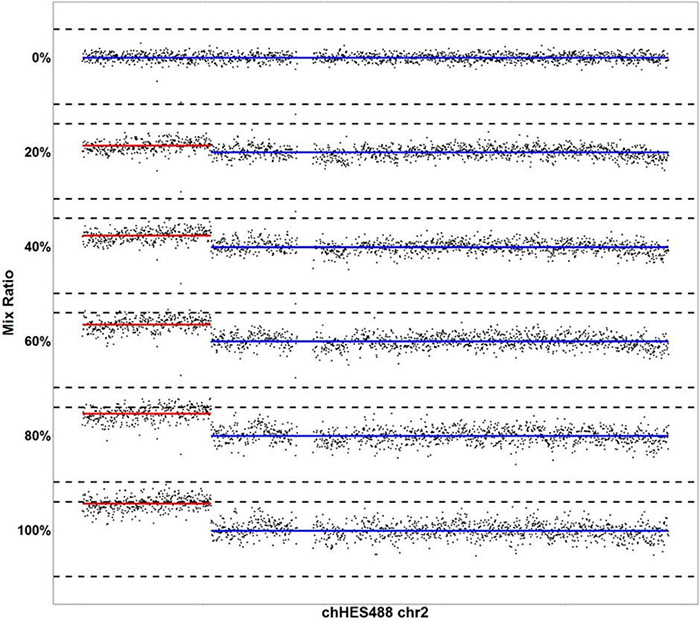A research team jointly formed by the Professor Lin’s research group of Reproductive and Genetic Hospital of CITIC-Xiangya (hereinafter referred to as ’CITIC Xiangya’) and GeneMind Biosciences published a paper online on BioRxiv titled ‘Accurate CNV identification from only a few cells with low GC bias in a single-molecule sequencing platform’.
 Design and performance for PGT-A applications can be extended application of the paper research. The results of the article show that GenoCare single molecule sequencer is superior to the traditional NGS (Next generation sequencing) detection method in detection sensitivity and time for few cells detection.
Design and performance for PGT-A applications can be extended application of the paper research. The results of the article show that GenoCare single molecule sequencer is superior to the traditional NGS (Next generation sequencing) detection method in detection sensitivity and time for few cells detection.
The truntime of PGT-A detection based on the Genocare platform can be shortened from 2-3 days to 24 hours, and it also can reduce the GC bias caused by the traditional WGA (Whole Genome Amplification) (Figure 1). In order to verify the ability to detect chromosome abnormalities, six cell lines with small structural variations of different chromosomes (the smallest chromosome structural abnormality is a 1.29M segment of chromosome deletion) were picked. Single molecule sequencing system also be compared the consistent with next generation sequencing (NGS) platform Illumina HiSeq X Ten. The results show that CNVs as small as 1.29M can be successfully detected, which is consistent with Illumina HiSeq X Ten (Figure 2).
Figure 1 The experimental design scheme to characterize the WGA-induced bias and unamplified gDNA had less GC bias
Figure 2 Optimized TTI protocol can identify small CNVs.
(Chromosomal abnormalities: 46, XX, del (1p36.33-1p36.32) 1.29M)
In various applications based on micro cells as research samples, chimerism always puzzles researchers. For example, in pre-implantation embryos, chromosomal aneuploid mosaicism is common. However, different types and ratio of chimerism have various effects on clinical outcomes. Therefore, it is particularly important to accurately detect the chromosomal aneuploid mosaicism in a small number of cells. According to the recommendations of the Preimplantation Genetic Diagnosis International Society (PGDIS), abnormal chimerism higher than 80% is recommended to be treated with aneuploidy, lower than 20% is recommended to be treated with euploidy ,and between 20% and 80% can be used as a clinician’s reference, and the treatment plan should be chosen according to the specific situation. The research team also evaluated the detection efficiency of the chimeric abnormal embryos in this detection system. The gDNA of normal cell line and the chromosomal abnormal cell line were mixed at different ratios of 0% to 100% to simulate different chimeric ratios. Then, library was constructed, sequenced and analyzed. The result show that abnormal chimeras as low as 20% can be successfully detected in this detection system (Figure 3).
Figure 3 Detection results of CNVs in micro cell lines based on GenoCare 1600
(Chromosomal abnormalities: 46, XY, dup (2p25.3-2p16.2) 53.26M, 20% mosaic)



